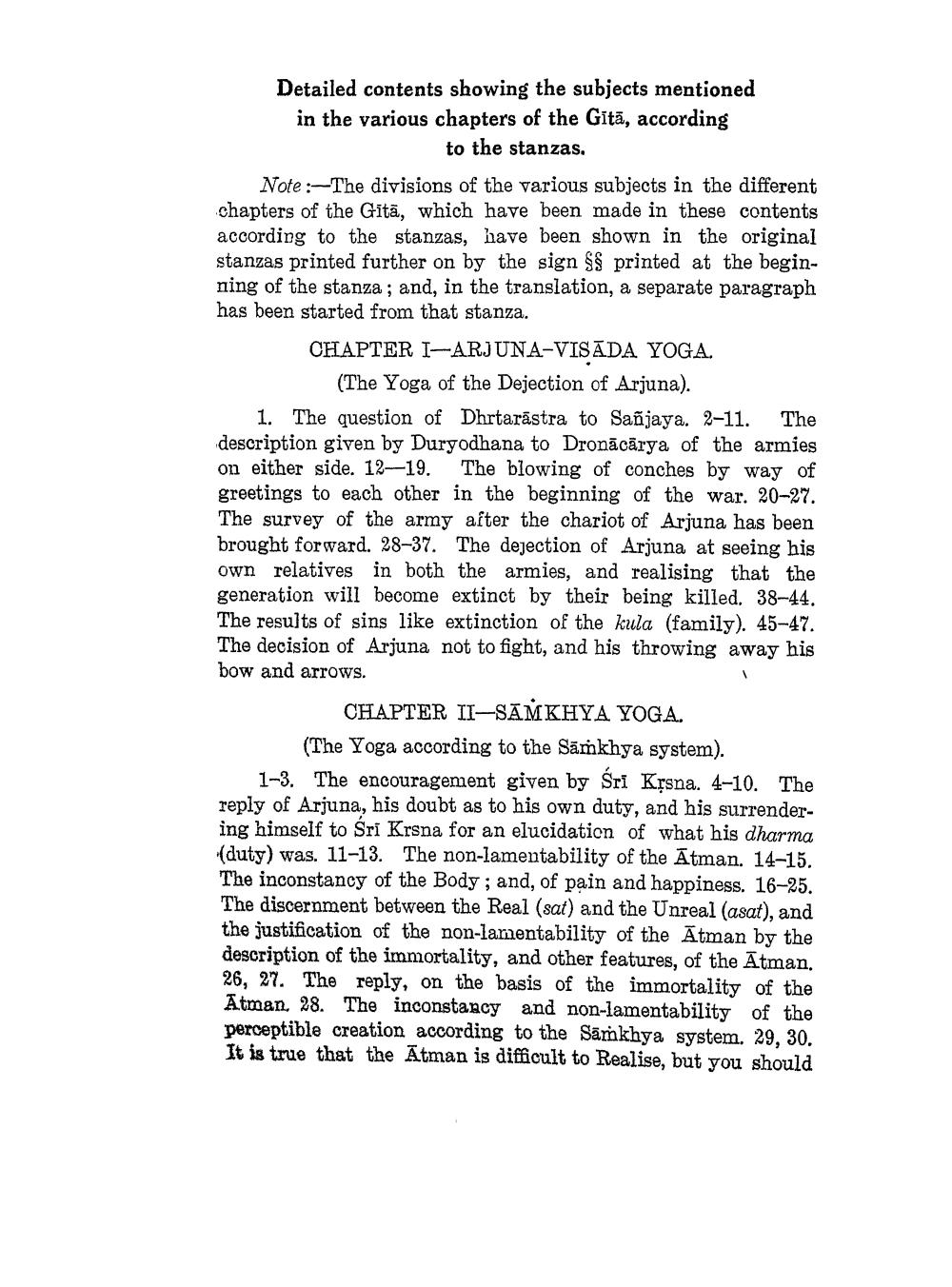________________
Detailed contents showing the subjects mentioned in the various chapters of the Gitā, according
to the stanzas. Note: The divisions of the various subjects in the different chapters of the Gītā, which have been made in these contents according to the stanzas, have been shown in the original stanzas printed further on by the sign SS printed at the beginning of the stanza; and, in the translation, a separate paragraph has been started from that stanza.
CHAPTER I-ARJUNA-VISĀDA YOGA.
(The Yoga of the Dejection of Arjuna). 1. The question of Dhrtarastra to Sanjaya. 2-11. The description given by Duryodhana to Dronācārya of the armies on either side. 12--19. The blowing of conches by way of greetings to each other in the beginning of the war. 20-27. The survey of the army after the chariot of Arjuna has been brought forward. 28-37. The dejection of Arjuna at seeing his own relatives in both the armies, and realising that the generation will become extinct by their being killed. 38-44. The results of sins like extinction of the kula (family). 45-47. The decision of Arjuna not to fight, and his throwing away his bow and arrows.
CHAPTER II-SAMKHYA YOGA. (The Yoga according to the Sāmkhya system). 1-3. The encouragement given by Sri Krsna. 4-10. The reply of Arjuna, his doubt as to his own duty, and his surrendering himself to Sri Krsna for an elucidation of what his dharma (duty) was. 11-13. The non-lamentability of the Ātman. 14-15. The inconstancy of the Body; and, of pain and happiness. 16-25. The discernment between the Real (sat) and the Unreal (asat), and the justification of the non-lamentability of the Ātman by the description of the immortality, and other features, of the Ātman. 26, 27. The reply, on the basis of the immortality of the Atman, 28. The inconstancy and non-lamentability of the perceptible creation according to the Samkhya system. 29, 30. It is true that the Atman is difficult to Realise, but you should




